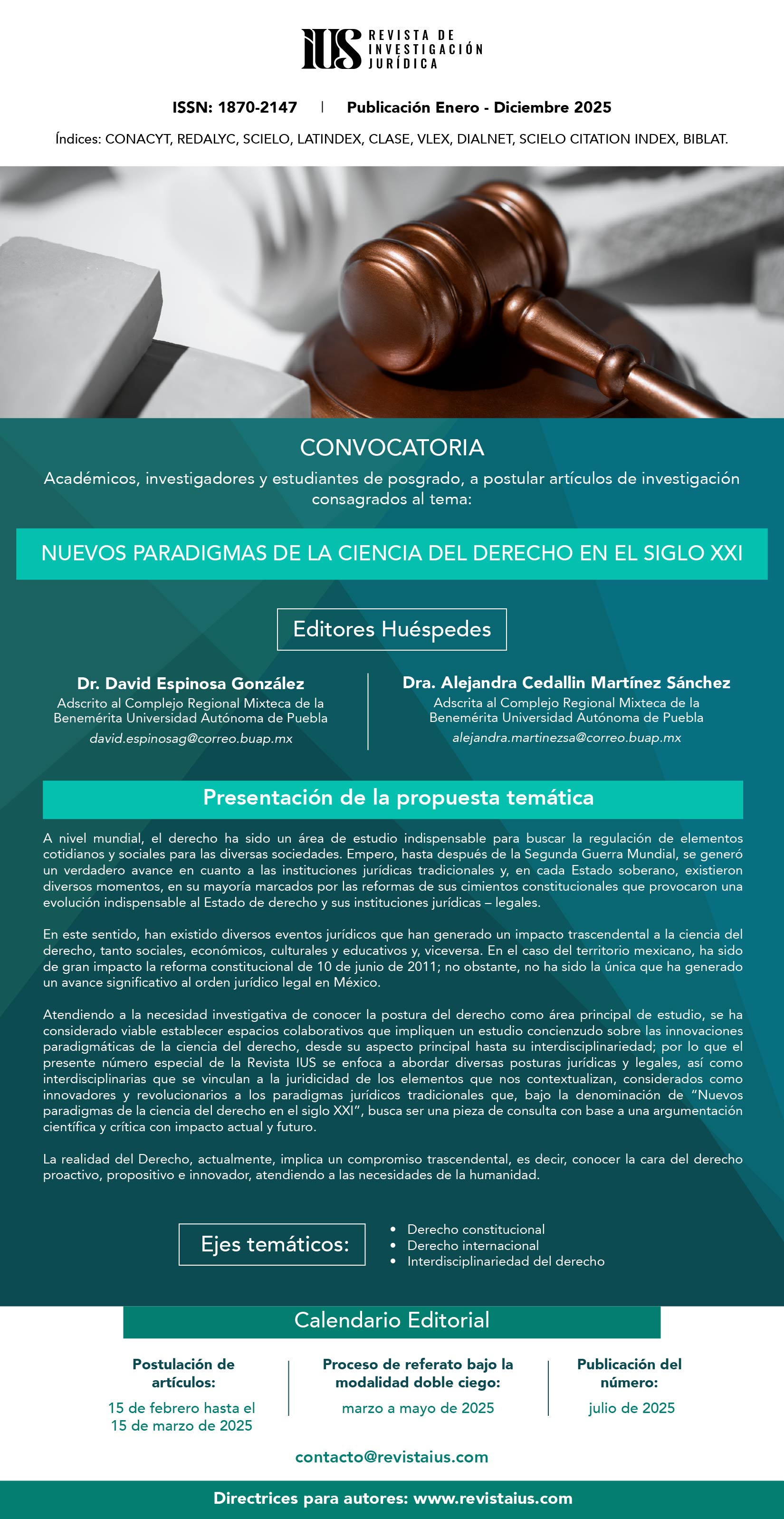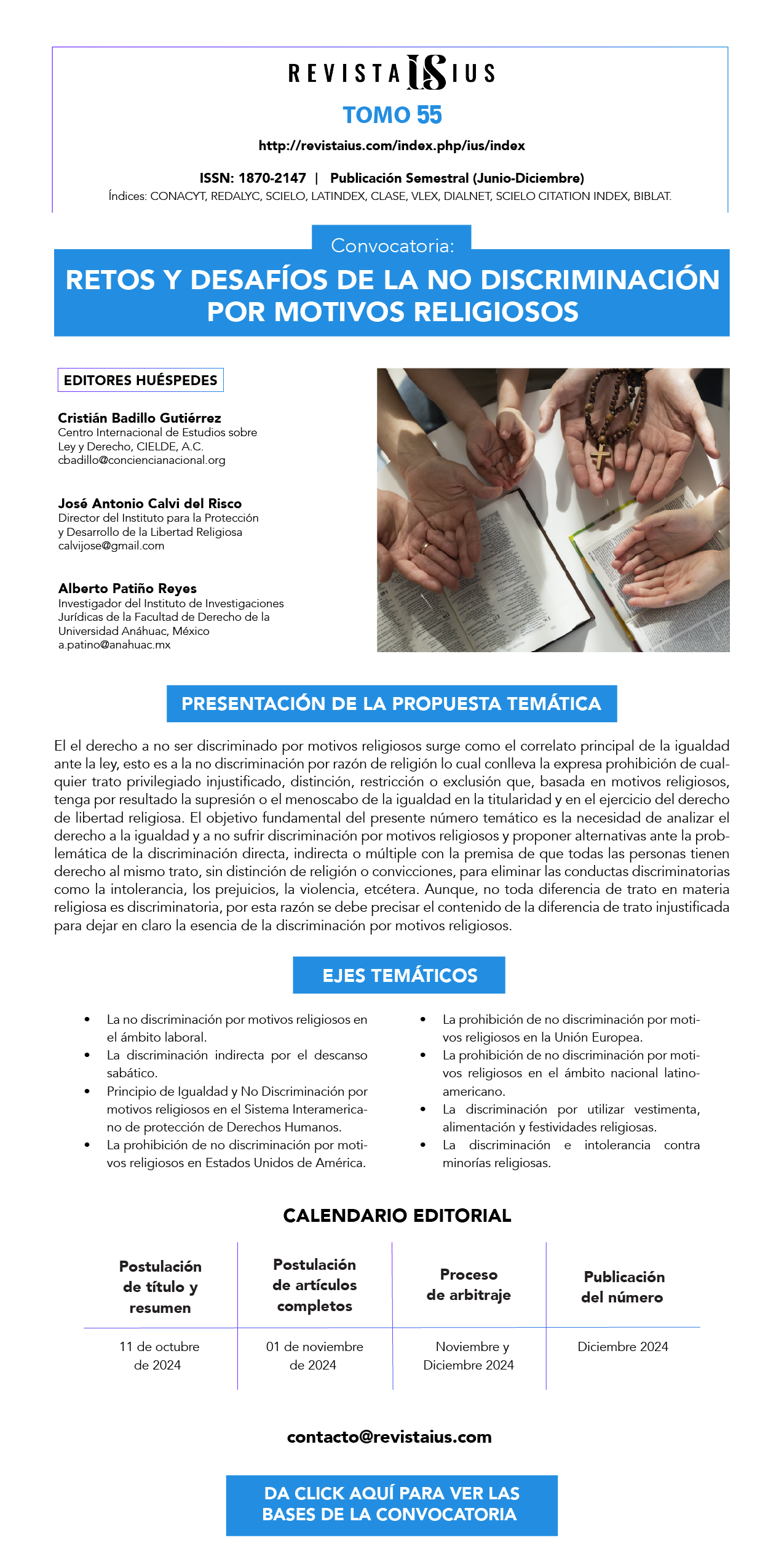Entre el derecho de los diseños y las patentes: la tecnología ponible
DOI:
https://doi.org/10.35487/rius.v12i41.2018.430Palabras clave:
Diseños industriales, diseños no registrados, patentes, derechos de autor, tecnología ponible, moda.Resumen
La Propiedad Intelectual se constituye en uno de los activos más importantes que tienen las empresas. Si bien tradicionalmente ha existido una clara diferencia entre los diseños industriales y las patentes al tiempo que debido a la propia naturaleza del diseño surgió la necesidad de plantear diversas posibilidades de tutela en torno a esta figura, el desarrollo tecnológico podría llevarnos a cuestionar los actuales mecanismos de protección. La tecnología ponible se encuentra en auge e implica una interacción de dos sectores que son aún materia de análisis, discusión y falta de consenso: la moda y la tecnología. Consideramos que podría llegar a producirse la desnaturalización del diseño industrial ante la inminente posibilidad de aceptación de una omisión de la forma con función que sumada a la poca claridad que existe respecto a la tutela de diseños no registrados y carencia normativa en torno a los diseños de tecnología ponible nos conducirían a un obligado análisis sobre la pertinencia de aplicación de los mecanismos legales actuales en el ámbito tecnológico y la necesidad de contar con normativas acordes a las innovaciones tecnológicas existentes.Descargas
Citas
U.S. Code § 171 - Patents for designs, Legal Information Institute.[Fecha de consulta 2 julio 2017]. Disponible enhttps://www.law.cornell.edu/uscode/text/35/171
“Acuerdo sobre los aspectos de los Derechos de Propiedad Intelectual relacionados con el comercio”, WorldTradeOrganization. [Fecha de consulta 5 julio 2017]. Disponible en: https://www.wto.org/spanish/docs_s/legal_s/27-trips.pdf
“Convenio de Berna para la protección de las obras literarias y artísticas”, OMPI. [Fecha de consulta 2 julio 2017]. Disponible en: http://www.wipo.int/treaties/es/text.jsp?file_id=283698
“Convenio de Paris para la Protección de la Propiedad Industrial”, OMPI. [Fecha de consulta 2 julio 2017]. Disponible en: http://www.wipo.int/wipolex/es/treaties/text.jsp?file_id=287557
“Copyright law of the United States”, Copyrigth.gov. [Fecha de consulta 10 julio 2017]. Disponible en: https://www.copyright.gov/title17/title17.pdf
Guillaume, E, Sociología de las Tendencias, Barcelona, Editorial Gustavo Gili, 2013.
Ley sobre el Derecho de Autor, Lima, 24 de abril del 1996, Diario Oficial El Peruano.
Poole, E, The Brave New World of Wearable Technology: What Implications for IP? Wipo Magazine [en linea]. 2014, Vol.3 [fecha de consulta 12 Julio 2017]. Disponible en: http://www.wipo.int/wipo_magazine/en/2014/03/article_0002.html
Raustiala, K y Sprigman, C, The piracy paradox: innovation and intellectual property in fashion design, Virginia Law Review, Vol. 92, diciembre 2016, [Fecha de consulta 10 julio 2017]. Disponible en: https://www.law.virginia.edu/pdf/faculty/sprigman_piracy.pdf
Salas Pasuy, Brenda. La industria de la moda a la luz de la propiedad intelectual, La Propiedad Inmateria [En línea]. 2013, Vol. 17. [Fecha de consulta 1 julio 2017]. Disponible en:
http://revistas.uexternado.edu.co/index.php/propin/article/view/3583/3800
Publicado
Número
Sección
Licencia
Revista IUS por el Centro Internacional de Estudios sobre Ley y Derecho. se distribuye bajo una Licencia Creative Commons Atribución-NoComercial-CompartirIgual 4.0 Internacional.
Autorizamos a sus colaboradores a que suban una copia de sus trabajos publicados en sus webs personales o en cualquier repositorio de acceso abierto, siempre y cuando se mencione específicamente a la Revista IUS como fuente original de procedencia, citando el año y número del ejemplar respectivo y añadiendo el enlace a la página web donde este órgano editorial puede ser consultado in toto, de manera abierta y gratuita en: http://www.revistaius.com
Las y los lectores tienen libertad para:
Compartir, copiar y redistribuir el material en cualquier medio o formato.
El licenciante no puede revocar estas libertades en tanto usted siga los términos de la licencia.
De acuerdo con los siguientes términos:
Atribución: El lector debe reconocer el crédito de una obra de manera adecuada, proporcionar un enlace a la licencia, e indicar si se han realizado cambios. Puede hacerlo en cualquier forma razonable, pero no de forma tal que sugiera que tiene el apoyo del licenciante o lo recibe por el uso que hace.
No comercial: El lector no puede hacer uso del material con fines comerciales.
Si remezcla, transforma o crea a partir del material, deberá difundir sus contribuciones bajo la misma licencia que el original.
Cargos por gestión de artículos
Revista IUS no cobra tarifas por recibir, procesar o publicar los artículos (Article Processing Charge [APC]) enviados por los autores.





